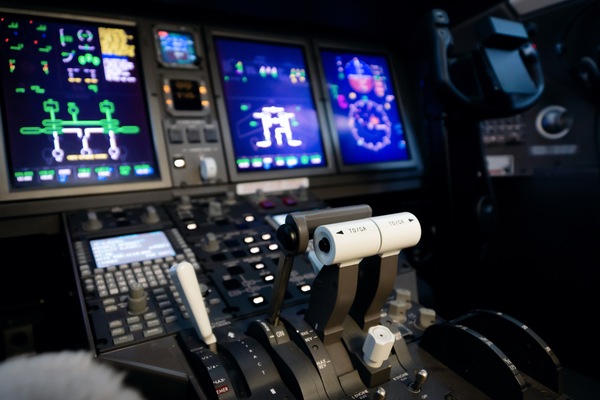
It’s hard to imagine life before GPS. Soon, the same will be said of the technology that powers modern avionics systems. The future has always belonged to those with the courage to adapt, and new INS systems are empowering the aviation industry to flourish. Here’s how INS systems are improving today’s avionics navigation systems.
An inertial navigation system (INS) relies on a series of gyros and accelerometers that serve as sensors. Basically, these sensors measure the acceleration of an aircraft, as well as its position in three-dimensional space. The data that these sensors provide allow the INS system to derive a navigation solution.
Practically speaking, this means that an INS system can be integrated into the avionics system of a modern aircraft. The INS system integrates with the aircraft’s flight management system as well as the automatic flight control system.
Users can create a predetermined flight path, as well as waypoints along this route. The INS system will then guide the aircraft between these waypoints, ensuring an efficient flight.
There are many in which an INS is superior to other avionics systems, including Global Navigation Satellite Systems (GNSS). In contrast to a GNSS, an INS system offers the following technical advantages:
These features mean that an INS system offers precision calculations that are more accurate than other navigation systems, providing a significantly higher degree of efficiency for guiding aircraft.
This is not to say that an INS system can’t be integrated with other navigational systems to improve accuracy. For example, an INS system can integrate with satellite navigation systems for the very best positional data.
But these sorts of integrations are not technically necessary, as modern INS systems are designed to function on their own. That allows the INS system to continue to provide data even if the signal from the satellite is interrupted.
Older INS platforms relied on mechanical gyros and outdated parts. But the units used today rely on laser gyros and solid-state accelerometers that provide improved accuracy and suffer from much less mechanical wear-and-tear.
Improved technology also means that the units themselves are more compact and more efficient, with some units only measuring 6 inches on a side.
With computer technology continually improving, we can expect data to be relayed to the aircraft’s avionics system at astonishing rates, increasing efficiency and providing more reliable data.
These improved INS systems have applications in both the civilian and military sectors. Ultimately, they can improve the experience of aviation professionals and passengers alike and provide another layer of guidance that can make air travel safer and more reliable than ever before.